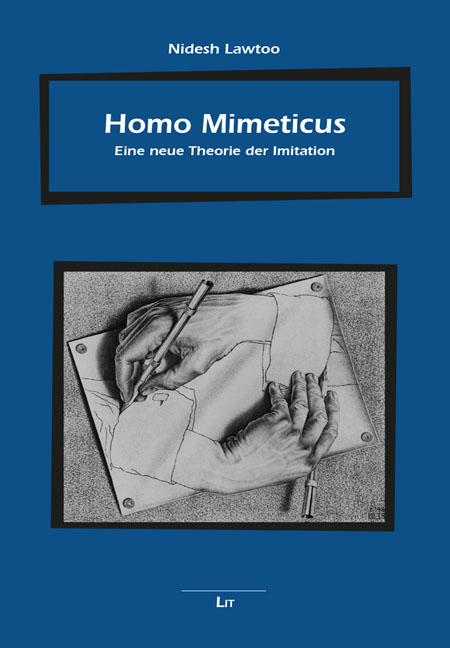
German translation available Open Access with Lit Verlag here.


German translation available Open Access with Lit Verlag here.
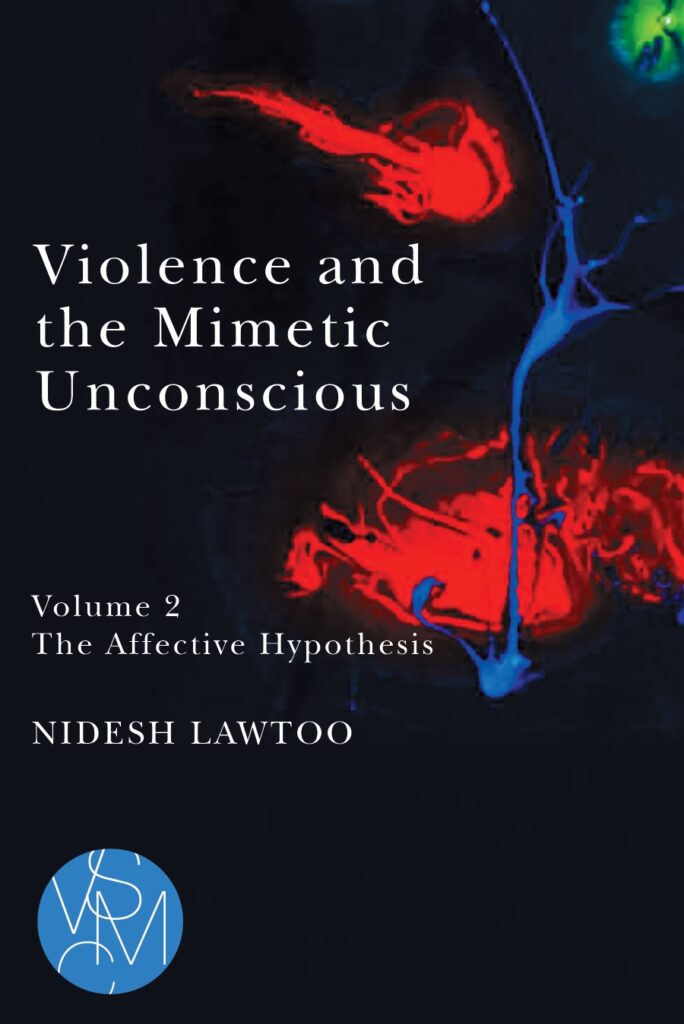
Representations of violence have subliminal contagious effects, but what kind of unconscious captures this imperceptible affective dynamic in the digital age? In volume two of a Janus-faced diagnostic on violence and the unconscious, HOM PI Nidesh Lawtoo traces a genealogy of a long-neglected, embodied, relational, and highly mimetic unconscious central to the problematic of (new) media violence. Now OUT with MSU P!
In this seventh episode of HOM videos, German philosopher Gunter Gebauer (Free U of Berlin) discusses the role mimesis plays in sports, the origins of language, social distinction, crowd behavior, and the recent rise of hypermimetic behavior in the digital age, all of which paint a picture of homo mimeticus beyond good and evil.
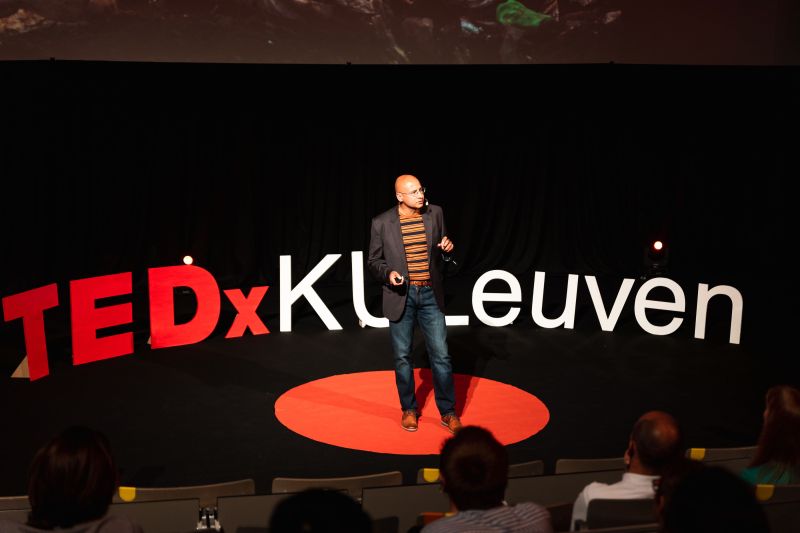
To conclude the Homo Mimeticus Project, PI Nidesh Lawtoo takes the mimetic turn on the TEDx stage, where mimesis has been at play for quite some time. Addressing the timely question, “how to (re)structure the (de)structured,” Nidesh takes us on an untimely philosophical journey–from children’s mimicry to Socrates’ dialogues, emotions to emojis, the Greek stage to the TED stage–to show that imitation is constitutive of an original species he calls, homo mimeticus.
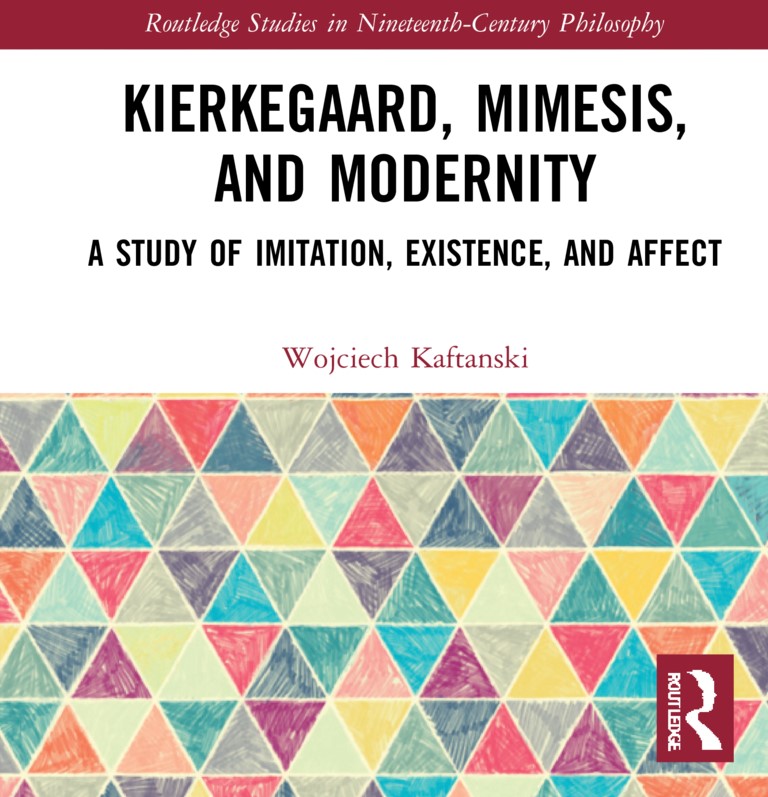
In this dazzling new book, HOM associate member Wojciech Kaftanski offers a timely, important, and original contribution to the mimetic turn. He convincingly shows how Kierkegaard’s existential mimesis interlaces aesthetic and religious themes, including the familiar core concepts of imitation, repetition, and admiration as well as the newly arisen notions of affectivity, contagion, and crowd behavior. Available for pre-order at Routledge.
In this fourth episode of HOM Videos anthropologist Christoph Wulf (Freie U of Berlin) builds on his seminal book, Mimesis: Culture-Art-Society (with Gunter Gebauer) to discuss the centrality of mimesis in ritual festivals, both in Europe and in Japan, in the construction of cultural identities, and in education and social life more generally.
Since the publication of Gunter Gebauer and Christoph Wulf’s seminal book, Mimesis: Culture- Art-Society in 1992, the realization that mimesis is constitutive of the human condition has become central to the humanities, the arts, the social sciences, stretching to inform the hard sciences as well. Furthering Gebauer and Wulf’s call to examining the productive aspect of mimesis as a “human condition,” the ERC-funded Homo Mimeticus: Theory and Criticism (HOM) project convokes a two-day transdisciplinary workshop at the Institute of Philosophy, KU Leuven, to explore the afterlives of the mimetic condition in the twenty-first century.
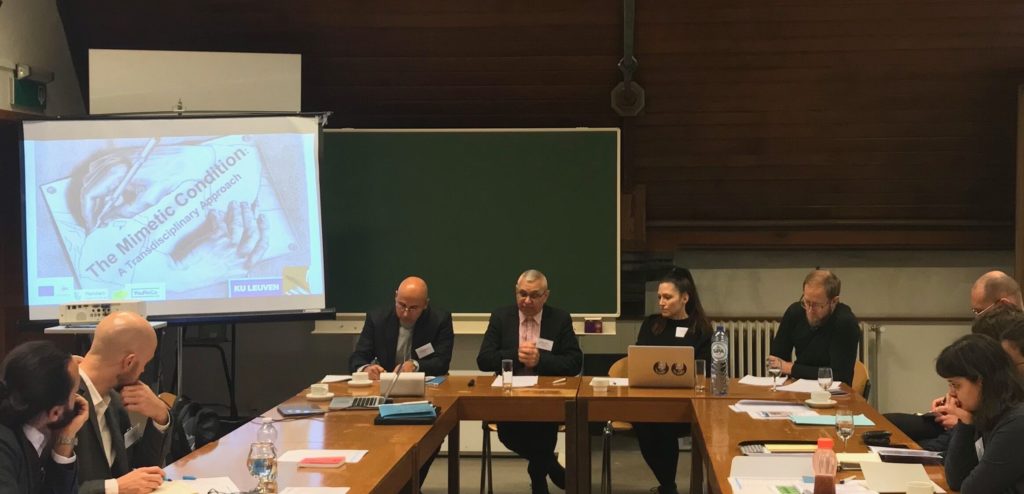
December 5-6, 2019,Room S, Institute of Philosophy, KU Leuven (Belgium) Keynote: Prof. Gunter Gebauer (Free University of Berlin) “Worldmaking of the Hand: The Mimetic Creation of Human Culture”
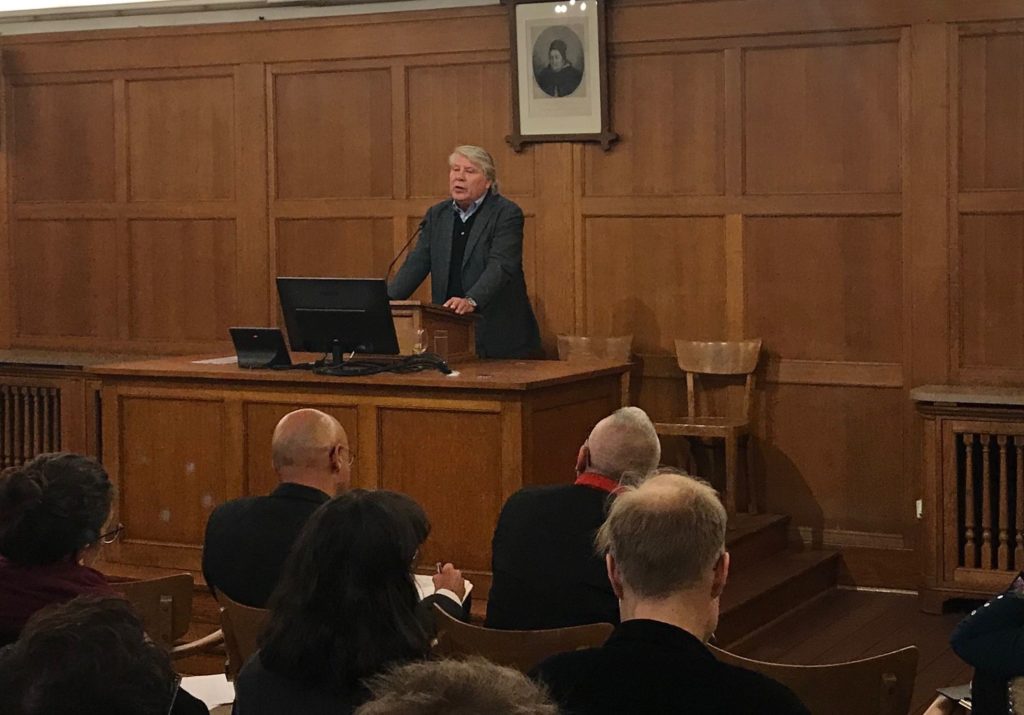
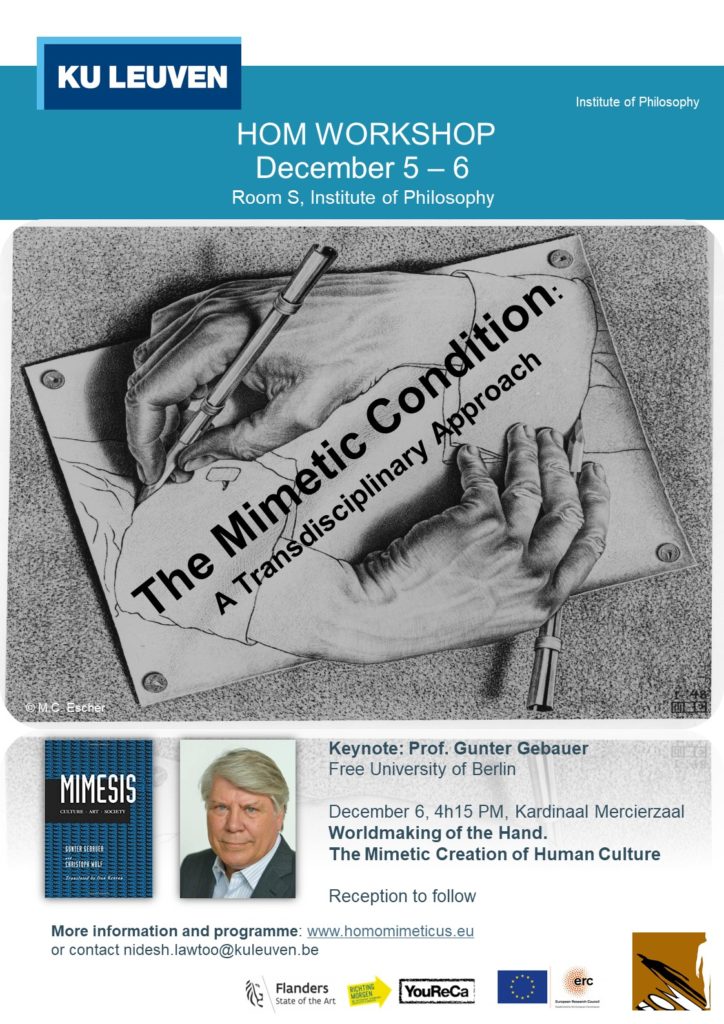
In this interview for the Leuven Philosophy Newsletter, HOM team member Niki Hadikoesoemo asks Nidesh Lawtoo to sketch the main outlines of the Homo Mimeticus project and to discuss the relevance of mimesis for contemporary philosophy, politics, education, the unconscious, as well as for forging interdisciplinary connections within and beyond the humanities. You can read the full interview here.